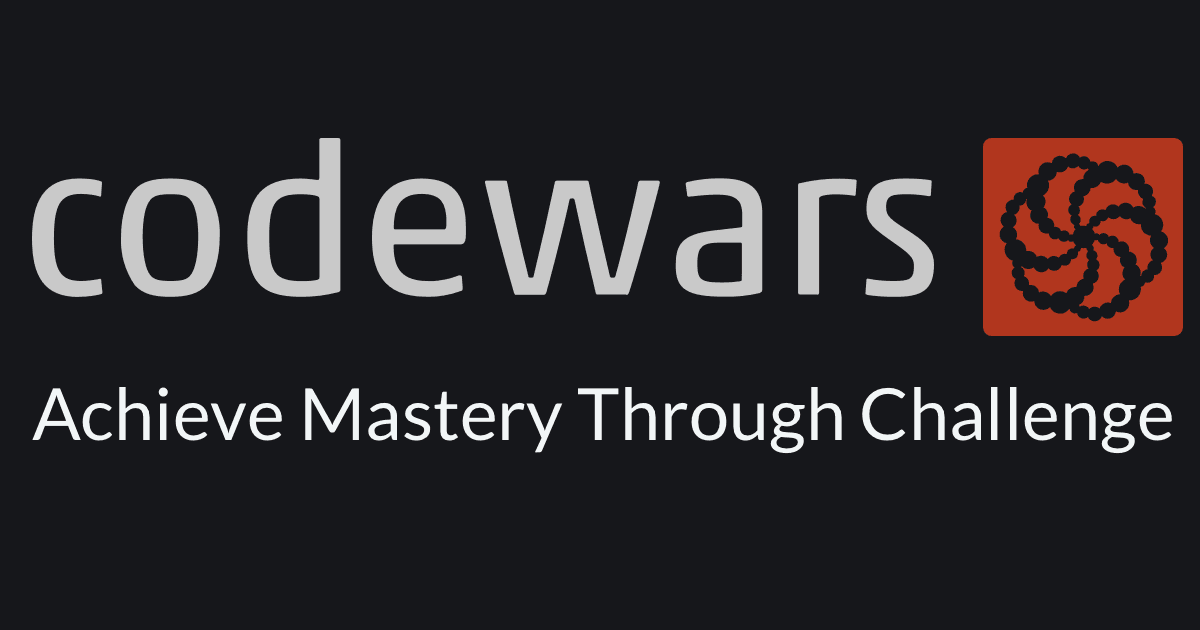
Inhalt
Die Fakten:
| Plattform: | codewars.com |
| Name: | Are they the "same"? |
| Level: | 6 kyu |
| Sprache: | TypeScript |
Beschreibung:
Given two arrays a and b write a function comp(a, b) (orcompSame(a, b)) that checks whether the two arrays have the "same" elements, with the same multiplicities (the multiplicity of a member is the number of times it appears). "Same" means, here, that the elements in b are the elements in a squared, regardless of the order.
Examples
Valid arrays
a = [121, 144, 19, 161, 19, 144, 19, 11]
b = [121, 14641, 20736, 361, 25921, 361, 20736, 361]
comp(a, b) returns true because in b 121 is the square of 11, 14641 is the square of 121, 20736 the square of 144, 361 the square of 19, 25921 the square of 161, and so on. It gets obvious if we write b's elements in terms of squares:
a = [121, 144, 19, 161, 19, 144, 19, 11]
b = [11*11, 121*121, 144*144, 19*19, 161*161, 19*19, 144*144, 19*19]
Invalid arrays
If, for example, we change the first number to something else, comp is not returning true anymore:
a = [121, 144, 19, 161, 19, 144, 19, 11]
b = [132, 14641, 20736, 361, 25921, 361, 20736, 361]
comp(a,b) returns false because in b 132 is not the square of any number of a.
a = [121, 144, 19, 161, 19, 144, 19, 11]
b = [121, 14641, 20736, 36100, 25921, 361, 20736, 361]
comp(a,b) returns false because in b 36100 is not the square of any number of a.
Remarks
aorbmight be[] or {}(all languages except R, Shell).aorbmight benilornullorNoneornothing(except in C++, COBOL, Crystal, D, Dart, Elixir, Fortran, F#, Haskell, Nim, OCaml, Pascal, Perl, PowerShell, Prolog, PureScript, R, Racket, Rust, Shell, Swift).
If a or b are nil (or null or None, depending on the language), the problem doesn't make sense so return false.
Quelle: codewars.com
Lösung
Pseudo-Code
Wie immer gibt's reichlich Varianten, hier ist eine meiner.
Erst die Lösungsschritte in Pseudo-Code. Los geht’s:
Lösungsschritte
Schritt 1
Zuerst prüfen wir, ob wir tatsächlich 2 Arrays haben.
Schritt 2
Dann sortieren wir beide Arrays.
Schritt 3
Jetzt können wir loopen.
Schritt 4
Wenn das Quadrat des aktuellen Elements in a ungleich des aktuellen Elements in b ist, geben wir false zurück.
Schritt 5
Ansonsten können wir nach dem Loop true zurückgeben.
Code
Geil. Übersetzen wir unseren Pseudo-Code in TypeScript:
Lösungsschritte
Meine erste Zeile:
export function comp(a: number[] | null, b: number[] | null): boolean {
Zuerst der Test, ob wir auch 2 Arrays bekommen:
if (!a || !b) return false;
Wenn ja, können wir beide Arrays sortieren:
a.sort((a, b) => a - b);
b.sort((a, b) => a - b);
Dann der Loop:
for (let i = 0; i < a.length; i++) {
Wenn das Quadrat des aktuellen Elements in a nicht dem aktuellen Element in b enspricht geben wir false zurück:
if (a[i] * a[i] !== b[i]) return false;
}
Ansonsten gibt’s nach dem Loop ein true zurück:
return true;
}
Voilá! 💪
Komplettlösung
export function comp(a: number[] | null, b: number[] | null): boolean {
if (!a || !b) return false;
a.sort((a, b) => a - b);
b.sort((a, b) => a - b);
for (let i = 0; i < a.length; i++) {
if (a[i] * a[i] !== b[i]) return false;
}
return true;
}